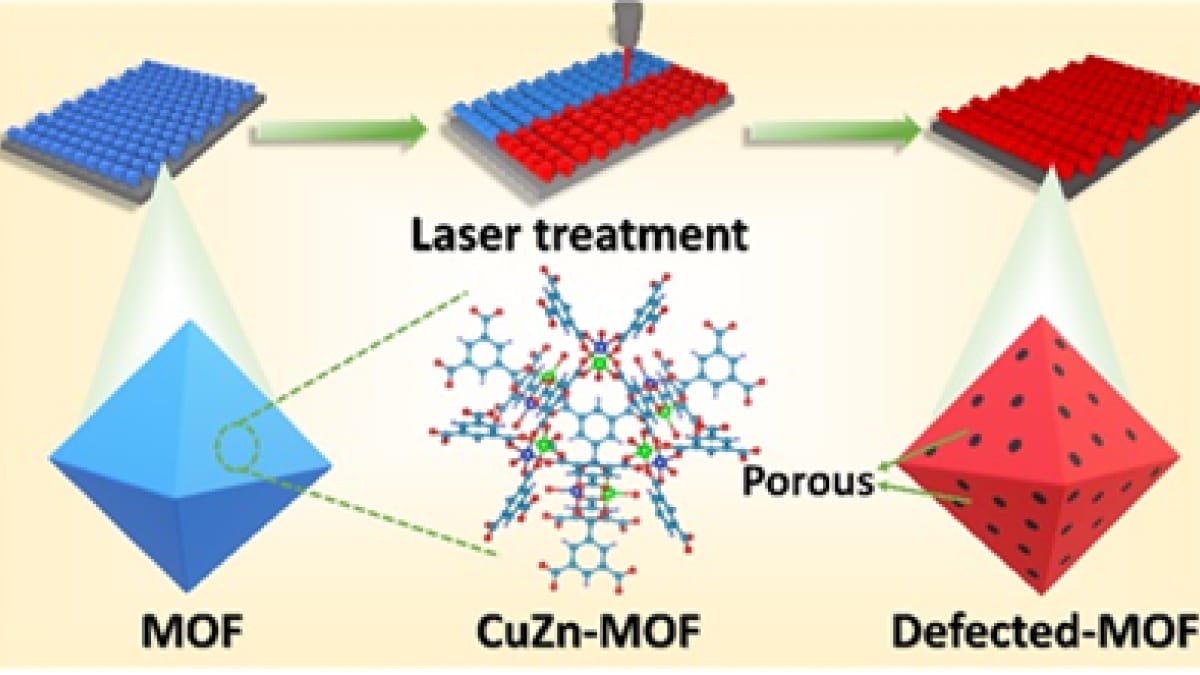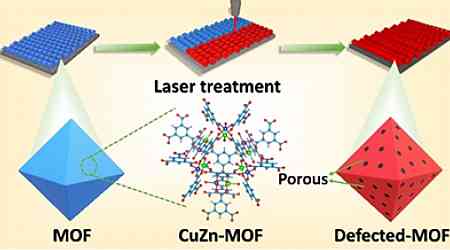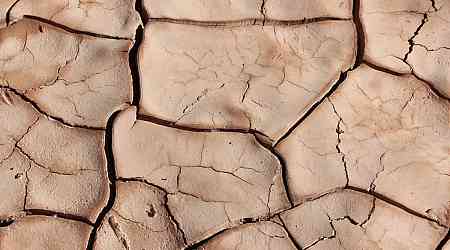A novel approach to improving the performance of MOF-based supercapacitors has been developed by researchers at the Institute of Nano Science and Technology (INST), Mohali. This laser-based technique allows for the controlled introduction of defects in the material, boosting energy storage capabilities. The method could offer a significant improvement over traditional methods used for defect creation, such as thermal annealing, chemical exposure, and ball milling, which lacked precision.
How Laser Technology Improves MOF-Based Supercapacitors
In this innovative approach, Prof Vivek Bagchi and his team at INST used laser irradiation to create defects and porosity in the CuZn-BTC MOF. By carefully adjusting laser power, they were able to increase the electrode's surface area without altering the Metal Organic Framework's (MOF) crystal structure. The details of the research were published in the journal ACS Materials Letter.
This precise tuning enhances the material's performance by enabling better ion diffusion and improved energy storage. The pores generated in the three-dimensional MOF structure allow ions to travel more efficiently, significantly enhancing the device's energy storage capacity.
Traditional methods of defect creation tend to transform the material or create composite structures, reducing efficiency. However, this laser method maintains the MOF's original crystallinity while improving its electrochemical properties. Upon laser exposure, some bonds in the CuZn-MOF break, creating pores that improve ion diffusion while keeping the overall structure intact.
Environmental and Performance Benefits
In addition to enhancing energy storage, the laser process is quicker, cleaner, and more environmentally friendly than conventional approaches. It eliminates the need for chemical solvents, making the process both safer and faster. The findings, published in ACS Materials Letter, highlight the potential for applying this method to other MOF materials to improve performance in energy storage technologies.
































